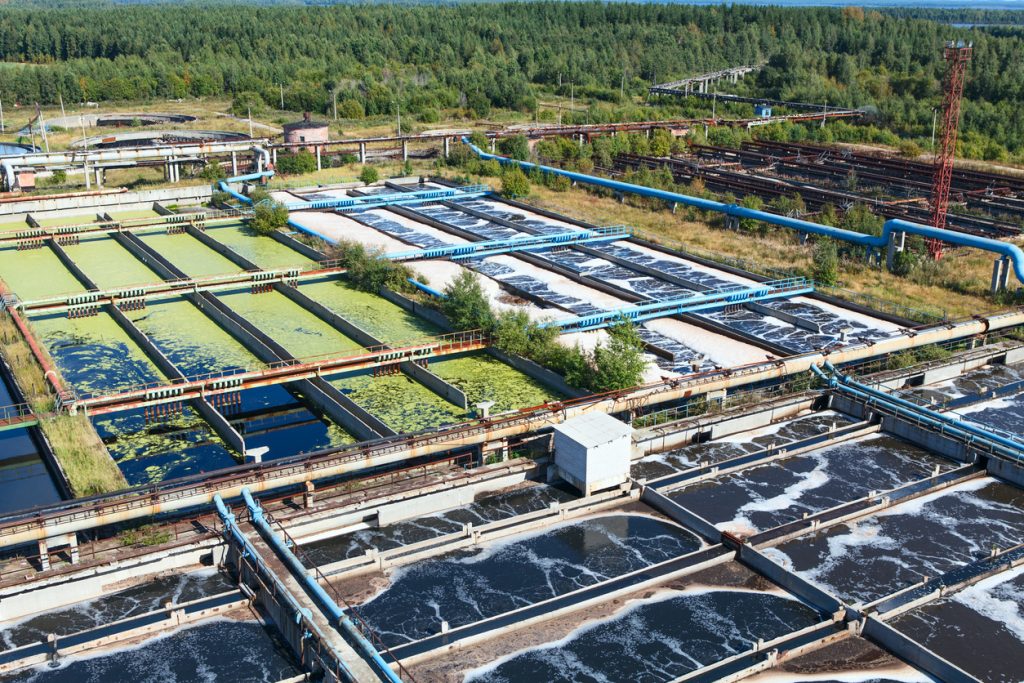Exploring the Duty of Biotechnology in Waste Water Treatment
Exploring the Duty of Biotechnology in Waste Water Treatment
Blog Article
Strategic Approaches to Improve Drainage Treatment Performance and Minimize Ecological Effect
In the world of waste water treatment, the quest for improved effectiveness and lowered ecological influence is a continuous difficulty that demands tactical options. As culture faces the crucial to take care of water sources sustainably, a nuanced strategy comes to be essential. The integration of advanced treatment innovations, energy-efficient procedures, source healing methods, enhanced nutrient removal techniques, and smart monitoring and control systems stands for a complex structure for addressing these pushing worries. Nevertheless, what exists at the core of this complicated internet of approaches is the potential to reinvent the means we come close to drainage treatment, not equally as a procedure of disposal, yet as a beneficial possibility for advancement and environmental stewardship.
Advanced Treatment Technologies
Cutting-edge membrane filtering systems have reinvented innovative wastewater treatment processes, considerably improving the elimination of contaminants. This technology has actually confirmed to be highly effective in eliminating a broad array of impurities, consisting of drugs, heavy metals, and natural compounds, which are frequently testing to get rid of via standard treatment approaches.
Moreover, membrane layer purification systems supply numerous benefits over traditional therapy strategies. They call for less room, generate higher-quality effluent, and are much more immune to variations in influent water high quality. In addition, these systems are extremely flexible and can be easily integrated right into existing treatment plants or used as standalone units for decentralized applications. As the need for tidy water remains to climb, the fostering of advanced membrane purification innovations is necessary to make certain reliable and sustainable wastewater treatment techniques.
Energy-Efficient Processes
The combination of energy-efficient processes in wastewater therapy systems is critical for maximizing resource usage and minimizing functional costs. One essential strategy to improving energy efficiency in wastewater treatment is the use of advanced oygenation systems, such as great bubble diffusers or surface area aerators, which can improve oxygen transfer efficiency and decrease energy consumption.
Moreover, enhancing procedure control and automation with the usage of innovative sensing units and monitoring systems can enhance overall energy efficiency by changing procedures in real-time based upon actual demand and conditions. Applying power audits and on a regular basis checking energy performance signs are necessary techniques to recognize areas for improvement and track energy-saving efforts successfully. Overall, the adoption of energy-efficient processes in wastewater treatment not only profits the setting however also contributes to long-term price savings and functional sustainability.
Resource Recuperation Methods
With a concentrate on enhancing resource usage and sustainability in wastewater treatment systems, the application of source healing strategies becomes a pivotal aspect in boosting functional effectiveness. Resource recuperation methods in wastewater treatment involve the recognition and extraction of valuable sources from the waste stream, thus turning what was as soon as taken into consideration waste right into a beneficial possession. By implementing source recovery methods such as nutrient elimination and recovery, energy generation from raw material, and the production of recyclable water, wastewater treatment plants can decrease environmental influence while making the most of performance.

Enhanced Nutrient Removal Strategies
Applying innovative nutrient elimination techniques is vital for optimizing the efficiency of wastewater therapy systems. Improved nutrient removal plays a crucial duty in lessening the environmental impact of cured effluent discharged right into water bodies. Among the crucial techniques made use of for boosted nutrient removal is the procedure of biological nutrient removal (BNR), which entails the removal of nitrogen and phosphorus via organic processes. This can be attained with the use of specialized microbes that can convert nitrogen substances into inert nitrogen gas through denitrification, and gather phosphorus within their cells with a process called boosted organic phosphorus elimination (EBPR)

In enhancement to BNR, progressed treatment approaches such as membrane bioreactors (MBRs) and constructed marshes can additionally be employed to boost nutrient elimination performance. MBRs utilize membranes to accomplish premium effluent requirements by successfully removing nutrients and suspended solids. Built wetlands imitate natural wetland processes to get rid of nutrients with plant uptake, microbial check my source activity, and sedimentation. By incorporating these sophisticated nutrient removal strategies right into wastewater therapy systems, communities and sectors can successfully decrease nutrient contamination and secure the atmosphere.
Smart Monitoring and Control Systems
Utilizing sophisticated modern technology, the assimilation of smart tracking and control systems changes the functional performance of wastewater treatment facilities. These systems incorporate sophisticated sensors and data analytics to continually keep an eye on crucial specifications such as pH levels, turbidity, liquified oxygen, and circulation prices in real-time. By collecting and examining this information, drivers can obtain important understandings right into the efficiency of the therapy processes, allowing aggressive adjustments to maximize treatment performance.
Smart tracking and control systems additionally support remote monitoring capacities, enabling drivers to access real-time data and control features from off-site areas. This remote ease of access boosts functional versatility and responsiveness, allowing quick treatments in instance of system breakdowns or variations in influent quality. The predictive maintenance abilities of these systems aid prevent devices failings and decrease downtime, ultimately enhancing the total reliability of wastewater treatment operations.
Final Thought
To conclude, strategic techniques such as advanced treatment modern technologies, energy-efficient procedures, source recovery techniques, improved nutrient elimination strategies, and clever monitoring and control systems play a crucial role in enhancing wastewater treatment effectiveness and decreasing ecological influence. By executing these methods, wastewater therapy plants can boost their total performance, decrease energy usage, recoup valuable resources, and make certain conformity with ecological laws. These approaches are important for reliable and sustainable wastewater administration methods.

In verdict, calculated approaches such as innovative treatment technologies, energy-efficient procedures, resource recuperation strategies, improved nutrient removal strategies, and smart surveillance and control systems play a crucial function in boosting wastewater treatment performance and lessening environmental effect.
Report this page